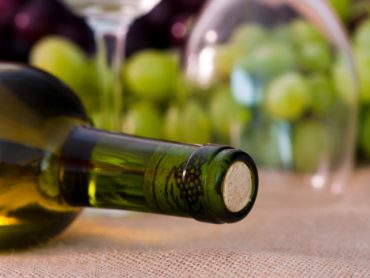In Vino Veritas, Part XV: A Tale of Two Canadas
I am proudly Canadian. I am proudly a Torontonian (for the past 30-plus years). Dovetailing my home city’s booming growth over the past decade has been the proliferation of Ontario wine and viticulture, centered around the Niagara Peninsula but not excluding Prince Edward County and Pelee Island. I’m blessed because some of Canada’s best wines are all within a day’s drive of my house, which has spurred me on many road trips I would have otherwise forgone.
As my knowledge increased with each vineyard visit, my curiosity for other Canadian appellations grew. One has always stood out, and it wasn’t until earlier this year when I had a chance to travel there in person. This region is none other than the spectacular Okanagan Valley about four hours’ drive inland from Vancouver, British Columbia. With Niagara representing the east and the Okanagan representing the west, Canada now has plenty of wines to compete on the world stage, and definitely worth your consideration.
Living in Canada, I’m biased to not only favor these wines, but also to select from an enormous vintage collection at every liquor store. But this won’t be the case for other vendors in the United States and elsewhere. Both Niagara and the Okanagan Valley are relatively small in physical area compared with other appellations that produce for the world market. In addition, Canadian winters make for shorter growing seasons and less overall yield, even though both are geographically tempered by the northern chills for moderately hotter and drier microclimates. On top of all this, my fellow Canucks have developed quite the appetite for this purple elixir, so many of the bottles are consumed locally.
All this means Canadian vintages may be a tad harder to source than those from other regions, but exclusivity is an allure in its own right. Don’t underestimate the quality either. Both regions cater to the international bestselling varietals such as Cabernet Sauvignon, Merlot, Pinot Noir, Chardonnay, Cabernet Franc, Pinot Gris and Sauvignon Blanc. I find it’s especially important to follow a farmer’s almanac when choosing your year. This is because the shorter growing season leaves the fruit far more vulnerable to week-over-week fluctuations. For instance, if there’s a whopping dose of rain during the tail end of summer (August and September), the acids and sugars cannot concentrate within the grapes, severely affecting flavor.
Despite these concerns, the shorter season has one definite benefit: ice wine. Bar none, Canada has the best ice wines in the world. The most popular base strains include Riesling, Vidal, Gewürtztraminer and Cabernet Franc (a red wine and also my favorite varietal). The key with ice wines — and why Canada does them so well — is that the fruit must be left on the vine during the early stages of winter until they solidify to a temperature no warmer than -8ºC (17ºF). The first frost leaves the grapes highly concentrated with sugars, resulting in a sweet beverage with a hefty alcohol percentage. They’re customary for dessert, but a glass also works as an aperitif or an appetizer accompaniment.
You might decide to initially put a Canadian vintage on the menu out of pure novelty, but rest assured, the winemakers here are not neophytes. Look over the official stamp of assurance: a gold medallion emblazoned with the letters VQA (Vintners Quality Alliance). In terms of investing, Canada shipped nearly 500,000 bottles of ice wine in 2011 — demand is on the upswing, which means the average price will surely rise within five years!
And if you decide to visit either region first, know that both have plenty to do outside of the tasting room. The Greater Toronto Area is renowned as having the most golf courses per capita of any major city, and the Okanagan Valley enjoys great watersports during summer and outstanding skiing during winter, all accompanied by picturesque mountain views in every direction. So, show off your Canadian spirit with a visit and perhaps a case or two of one of our best exports.
(Article published by Larry Mogelonsky in HOTELSmag on September 27, 2013)




